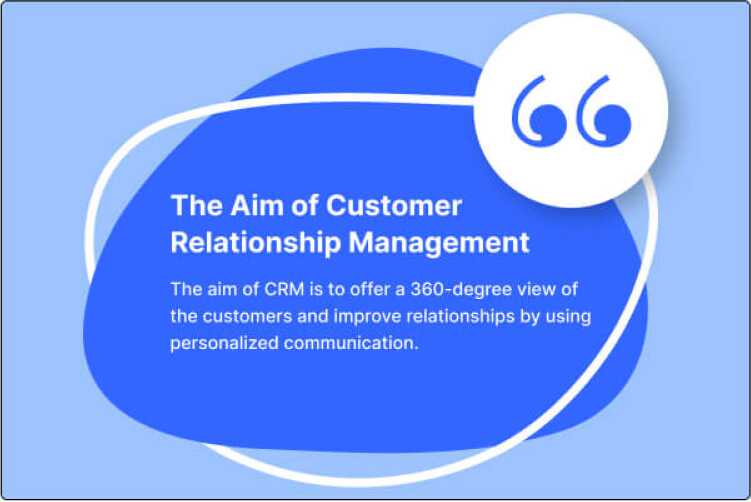Customer Experience Management (CEM) vs Customer Relationship Management (CRM)
- April 26, 2023
- 11 mins read
- Listen

What is Customer Experience Management (CEM)?
Customer experience management (CEM) is the process and practice of designing and managing all the interactions that customers have with a company. The main purpose of CEM is to understand the customer journey, identify pain points and then devise/implement strategies that can enhance the overall customer experience. Customer experience management comprises certain key elements, including:
Customer experience management comprises certain key elements, including:- Understanding the customer and their needs is the key element of CEM where the focus is to gather and analyze data for gaining insights into customers’ motivations and behavior.
- Mapping the customer journey and identifying the pain points are other vital aspects of CEM as both are done to improve the customer experience.
- Training and empowering the customer-facing employee is also a major aspect of customer experience management as it ensures the delivery of great service and support.
- Working to deliver an omnichannel experience to customers is also a key element of the CEM process.
- The use of customer data and analytics to personalize the customer experience and tailor the targeted messaging is also a necessary element of customer experience management practice.
What is Customer Relationship Management (CRM)?
Customer relationship management refers to the best practices and strategies employed for managing customer interactions and forging customer relationships throughout the customer lifestyle. The aim of CRM is to offer a 360-degree view of the customers and improve relationships by using personalized communication. CRM comprises several key elements that include:
CRM comprises several key elements that include:- Customer data management is the most essential aspect of CRM that involves the use of customer data to gain insights into their needs and behavior.
- Sales and marketing automation are also integral parts of customer relationship management with a focus on providing relevant messages to customers and then boosting sales productivity.
- Providing customer support at each stage of the journey is a critical element of CRM so that their issues can be addressed proactively.
- The use of analytics and reporting tools is the pillar of the customer relationship management process as it helps businesses track and analyze customer interactions and optimize strategies for growth.
Customer Experience Management Vs Customer Relationship Management: The Differences
CEM and CRM are two entirely different approaches to managing customer interactions although both have some common goals and practices. While customer experience management is focused on managing the overall customer experience with a brand, CRM is more geared towards improving customer relationships by optimizing customer interactions. Some key differences between CEM and CRM are as follows:
Some key differences between CEM and CRM are as follows:- Focus – The main focus of CEM is to create a positive experience across all touchpoints and build customer loyalty. In contrast, optimizing customer interactions is the primary goal of CRM to boost customer relationships. Here, you’ll find some customer relationship examples.
- Scope – While CEM includes all aspects of the customer experience, CRM is mostly only concerned with managing customer data and the sales process. This makes the former broader in scope while the latter narrow in focus.
- Tools and platforms – While the tools and platforms used in CEM are intended for understanding and enhancing the overall customer experience, they help optimize customer interactions and sales processes in CRM.
- Metrics – Whereas the key metrics used in CEM are related to customer satisfaction and loyalty, the ones used in CRM focus more on sales, acquisition, and retention.
- Timeframe – CEM is a concept that has a long-term focus on building enduring relationships with customers while the focus of CRM is short-term with the target of driving immediate sales and revenue growth.
The Similarities Between Customer Experience Management and Customer Relationship Management
Both CEM and CRM are two distinct approaches to customer management. While they have different goals and objectives, they also share “customers” as a common focus. In both of them, the use of data and managing customer interaction are key. There are many similarities between CEM and CRM, including –
There are many similarities between CEM and CRM, including – - Both are focused on the customer and they are similar in their approach to providing customers with a positive experience and building enduring relationships with them.
- Both use technology to collect and analyze customer data with the view to enhance customer interactions throughout the journey.
- Both follow a data-driven approach where customer data is key to making decisions related to customers.
- Tracking customer behavior and ensuring personalized interactions are the pillars of both CEM and CRM processes.
- Both need cross-departmental collaboration to serve the purpose and ensure value to customers at each stage of the journey.
- Both are ongoing practices and processes involving certain adjustments to boost the customer experience along the way.
Customer Experience Management: Best Practices
Implementing a customer experience management system for a business is easy though it takes some effort to get it right. Proper planning and execution are key to getting the most out of a CEM system. Here are some of the best practices of the CEM system that will help your business deliver amazing experiences –Develop a customer-centric culture
It’s important for a business to first develop a culture that prioritizes customer satisfaction. In such a culture, delivering great experiences should be a top priority. To achieve that, it’s vital to train the employee on the virtues of meeting customer needs and delivering the kind of experiences desired. Your service team must also learn to go above the standard to serve and delight customers.Collect and analyze customer feedback
No business can be customer-centric if it does not gather and collect feedback. Together with collecting the feedback, it’s equally essential to work on them and implement the due changes to the products and services. The focus should be on identifying areas for improvement as only this can bring meaningful changes to the way your business deals with customers.Use customer data for personalization
Customers expect personalized interactions when they reach out to a business. In fact, 72% of customers prefer to only engage with personalized messaging. A touch of personalization to service can ensure great value to customers at each stage of the journey. Thanks to data, a company can offer personalized recommendations that align with the specific behavior and preferences of customers. The use of customer data can also help in offering customized content and promotional materials to users.Simplify the customer journey
Customers want their interactions to be easy and hassle-free. They want minimum hiccups along the customer journey touchpoints. To achieve this goal, it’s key to work on streamlining and simplifying the journey by reducing needless friction along the way. In addition, brands should remove all the unnecessary steps that make the buying process a hassled experience for customers. Once the buying process is smooth, customers can get an improved experience.
In addition, brands should remove all the unnecessary steps that make the buying process a hassled experience for customers. Once the buying process is smooth, customers can get an improved experience. Use technology to increase customer experience
Customer expectations are growing by the day as there are plenty of options and choices for them to explore. Plus, the use of the latest technology is also proving a key determinant in offering quality service to customers. Plus, 86% of buyers show a willingness to pay more for a great customer experience. For businesses, it’s vital to leverage the power of AI-based technology and tools such as chatbots and live chat, to make service efficient. These tools can also support automation which can add more effectiveness to the delivery of customer service.Measure your CEM efforts
Tracking progress is an essential aspect of improving the customer experience. With data and analytics for help, it’s quite easy to continuously improve the experience and make adjustments. Once the efforts of CEM are measured, a company can understand the changes to its strategy in regard to customer experience.Customer Relationship Management: Best Practices
Businesses that strive to achieve customer satisfaction are more likely to enjoy loyalty and long-term relationship. Both goals can never be achieved unless a business manages all interactions with customers. This is where customer relationship management (CRM) can help.Some of the best practices of CRM include –Understand your customers
Knowing the customers well means a business needs to understand their needs and behaviors. It’s also important to analyze their behavior using data and customer analytics. In addition, gaining insights into the buying patterns of customers is also vital to forging long-term relationships with them. Once a business is able to understand the customers better, it will handle all the challenges and expectations with ease. A business that does not care for understanding their customers will always find it hard to win their trust.
Once a business is able to understand the customers better, it will handle all the challenges and expectations with ease. A business that does not care for understanding their customers will always find it hard to win their trust. 



